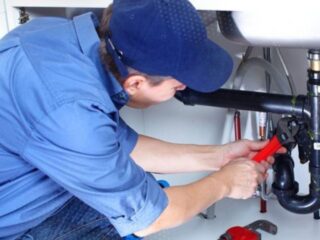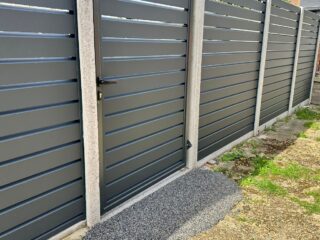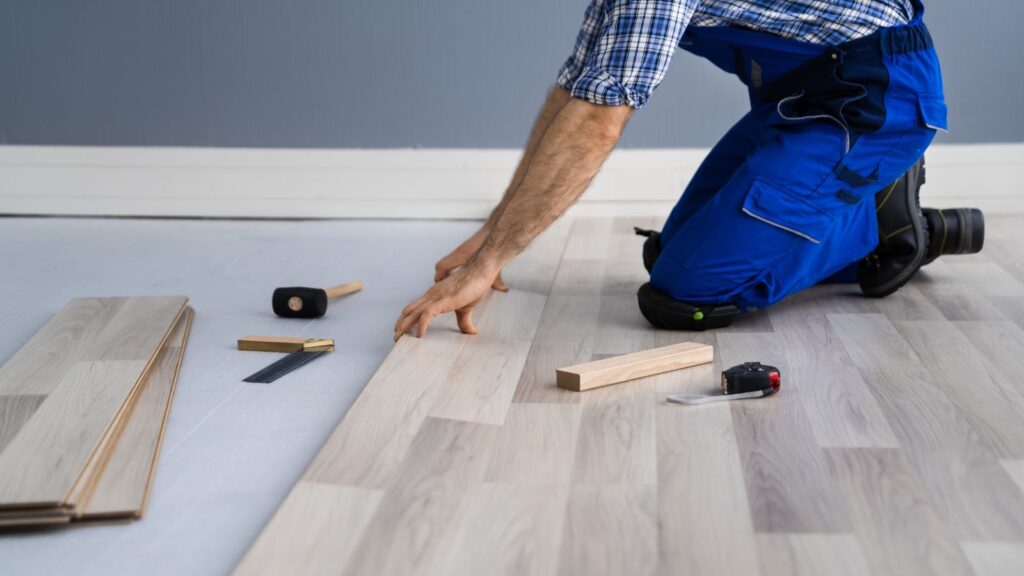
When renovating your home, choosing the right flooring is essential. Over recent years, hybrid flooring and wood-look tiles have rapidly become two of the most popular flooring choices for Australian homeowners. Both options perfectly mimic the timeless appeal of natural timber while offering significant advantages in durability, maintenance, and versatility.
But how do you know which is right for your home and lifestyle?
In this article, we’ll help you confidently decide between hybrid flooring and wood-look tiles. We’ll compare key factors, including appearance, durability, cost, ease of installation, ongoing maintenance, comfort underfoot, and suitability for different areas of your home. By exploring these considerations, you’ll gain clarity on choosing the ideal flooring for your renovation goals.
Understanding Hybrid Flooring
Hybrid flooring is an innovative option for modern homes. It combines the best features of laminate flooring and vinyl. It’s a multi-layered synthetic product features a rigid core, providing durability, stability, and outstanding moisture resistance.
One of hybrid flooring’s standout features is its waterproof properties, making it perfect for areas prone to moisture or spills, such as kitchens, bathrooms, laundries, and even entryways. Its durable composition effectively resists water damage, protecting your floor from everyday accidents and humidity.
Another significant advantage is the comfort that hybrid flooring provides. Thanks to an acoustic backing and slight flexibility, hybrid flooring feels warmer and softer underfoot than traditional tiles. This comfort factor is especially appealing for living rooms and bedrooms, where coziness and warmth are priorities.
Hybrid flooring also delivers remarkably realistic timber visuals due to advanced printing technology. High-definition imagery and textured finishes replicate the authentic appearance of natural wood, offering homeowners the charm and sophistication of timber without limitations.
Installation is straightforward and DIY-friendly, typically using a click-and-lock system. This method doesn’t require adhesive or extensive preparation, making it a convenient choice for renovators keen to save time and effort.
Given these characteristics, hybrid flooring is ideally suited to practically every area of your home, seamlessly combining practicality with aesthetic appeal.
Understanding Wood Look Tiles
Wood look tiles are porcelain or ceramic tiles crafted specifically to replicate the visual appeal of traditional timber flooring. Manufactured using advanced digital printing technology, these tiles convincingly mimic the textures, grain patterns, and colours of natural wood—offering homeowners a beautiful yet highly practical flooring option.
A significant advantage of wood look tiles is their remarkable durability. Resistant to scratches, stains, and general wear, these tiles easily withstand heavy foot traffic, pets, and busy family life. This makes them particularly suitable for high-traffic areas such as living rooms, hallways, and entryways.
Another essential benefit of wood look tiles is their outstanding waterproof and moisture-resistant qualities. Unlike real timber, porcelain and ceramic tiles won’t warp, swell, or degrade when exposed to water or moisture. Because of this, they’re an excellent choice for wet areas such as kitchens, bathrooms, and laundries.
It’s important to note that tiles naturally have a cooler, firmer feel underfoot compared to hybrid flooring or real timber. While this feature can be an advantage in warm climates, it might require additional comfort measures—such as rugs or underfloor heating—in cooler regions or bedrooms.
Due to their high durability, water resistance, and ease of cleaning, wood look tiles provide an exceptional flooring solution for any area of the home that demands long-lasting performance and practicality.
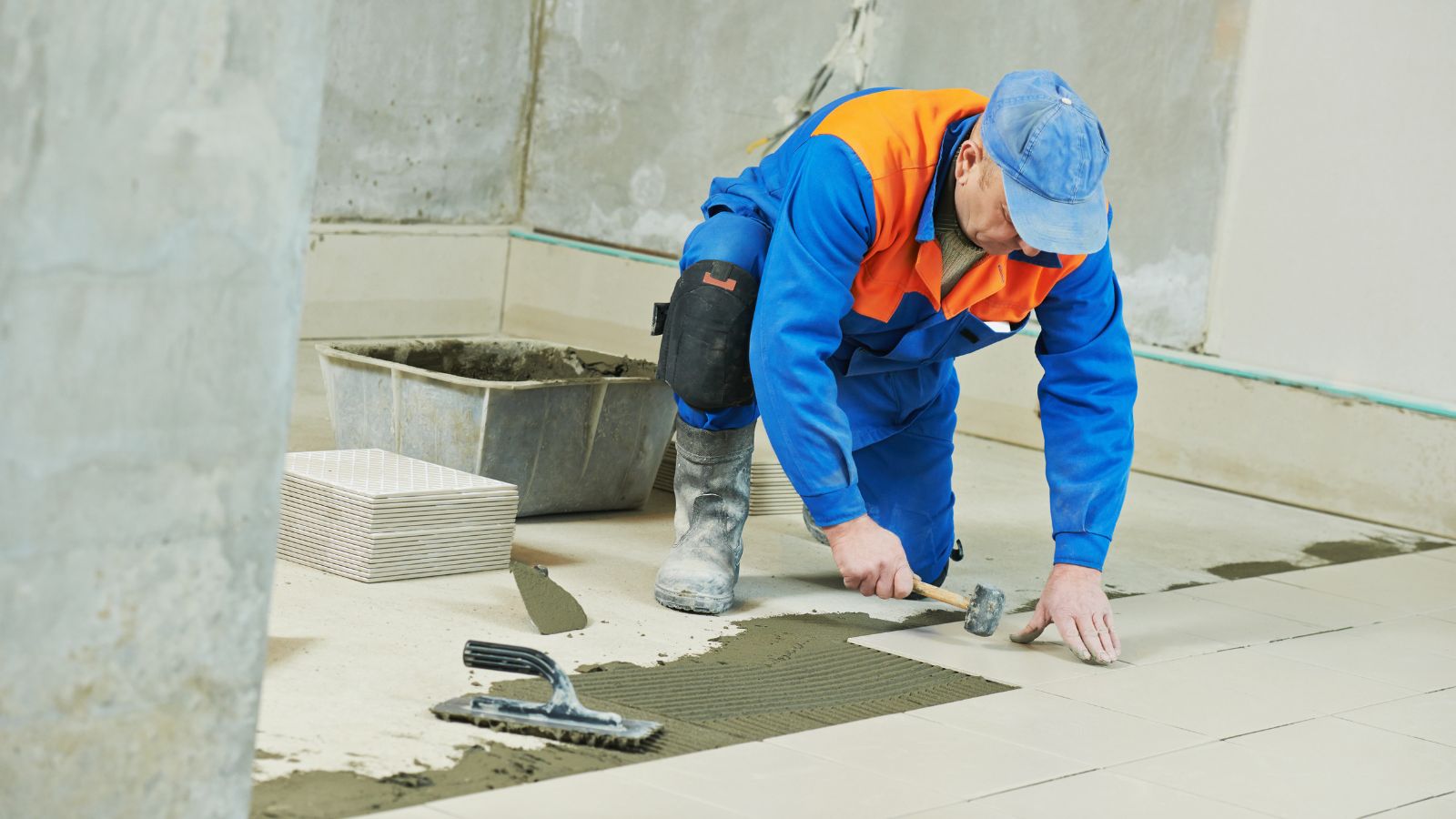
Appearance and Style Comparison
When it comes to appearance, both hybrid flooring and wood-look tiles effectively recreate the natural beauty and warmth of real timber. However, subtle differences in their textures, finishes, and visual authenticity may influence your final decision.
Realism and Authenticity
Hybrid flooring uses advanced printing technologies combined with realistic embossed textures to replicate the grain patterns, knots, and subtle variations of natural timber. This results in a visually authentic wood appearance that’s difficult to distinguish from real hardwood at a glance.
Similarly, wood-look tiles utilise high-definition digital printing to mimic natural timber grain, knots, and colour variations precisely. Some tiles also incorporate raised surface textures and subtle imperfections for an even more convincing timber look.
Both materials offer impressive realism, and choosing between them may simply come down to personal preference—whether you prefer the slightly softer appearance of hybrid flooring or the crisp, precise detailing provided by tiles.
Range of Design Options
Hybrid flooring typically comes in various plank sizes and lengths, closely mimicking traditional timber boards. You’ll also find a wide selection of colours, from natural oak to contemporary grey tones, with matte or semi-gloss finishes available.
Wood-look tiles offer similar versatility, available in multiple sizes from smaller plank formats to longer, wider tiles for spacious areas. Tiles often feature a more extensive variety of surface finishes—ranging from smooth matte textures to rustic hand-scraped looks.
Colour Stability and Fading Resistance
Hybrid flooring has excellent colour stability, with quality products offering strong resistance to UV-induced fading. However, prolonged exposure to direct sunlight can potentially lead to minor discolouration over extended periods.
Wood-look tiles, on the other hand, demonstrate exceptional colour stability. They’re highly resistant to fading, even when exposed to strong sunlight over many years, making them an ideal choice for rooms with large windows or significant sunlight exposure.
Matching to Interior Styles
Both hybrid flooring and wood-look tiles suit various interior design styles. For a cosy, comfortable, and warm aesthetic—such as country, rustic, or traditional interiors—hybrid flooring might be particularly appealing due to its warmth underfoot.
Alternatively, if you prefer a more refined, sleek, or modern look, wood-look tiles can provide a polished finish that’s easy to maintain. They work particularly well in minimalist, industrial, or contemporary styled homes.
Ultimately, choosing between hybrid flooring and wood-look tiles in terms of appearance depends on your design preferences, lifestyle needs, and the overall aesthetic you want to achieve in your renovation.
Durability and Lifespan
Durability is a critical factor when selecting flooring, especially for busy homes or households with pets and children. Let’s clearly compare how hybrid flooring and wood look tiles perform in terms of long-term wear and tear.
Hybrid Flooring Durability
Hybrid flooring is highly resilient against everyday wear and moisture, making it a great choice for busy family homes. Its waterproof properties ensure protection from spills, moisture, and humidity—perfect for kitchens, bathrooms, and laundries. It also offers resistance to minor impacts, meaning accidental drops or everyday activities won’t easily damage its surface.
However, hybrid flooring may be vulnerable to heavy impacts or sharp objects, which can cause dents or scratches. For example, dragging heavy furniture or dropping sharp tools could potentially mark the flooring, so it’s worth being mindful of this in high-risk areas.
With proper care, quality hybrid flooring is designed to last many years, often backed by generous warranties. At Ross’s Discount Home Centre, for instance, our hybrid flooring products come with a reassuring 10-year warranty, giving homeowners confidence in their flooring’s longevity.
Wood Look Tiles Durability
Wood look tiles are exceptionally durable, with a hard-wearing surface resistant to scratches, stains, and heavy foot traffic. They stand up well to furniture weight, pets’ claws, and high-activity family environments. As porcelain and ceramic tiles are waterproof, they’re also highly resistant to water damage—making them ideal for wet areas and entryways.
Despite their impressive toughness, tiles can be susceptible to chipping or cracking from severe impacts—such as dropping heavy objects onto the tile surface. While rare, these incidents require consideration in areas like kitchens, where cookware or heavy items might fall.
Similar to hybrid flooring, wood look tiles offer outstanding longevity, frequently outlasting other flooring options. Our wood look tiles also come with a comprehensive 10-year warranty, ensuring peace of mind for long-term performance.
Recommendations Based on Household Type
- Busy Families and Pets: Wood look tiles are recommended due to their scratch-resistant surface and superior durability under heavy usage conditions.
- High Traffic and Moisture-Prone Areas: Both options are excellent; however, tiles have a slight edge due to their unmatched durability and water resistance.
- Comfort and Everyday Practicality: For families prioritising comfort underfoot and ease of everyday maintenance, hybrid flooring can be a particularly attractive option.
By assessing your specific needs and the type of wear your flooring will experience, you’ll find it easier to select a solution that genuinely suits your lifestyle.
Installation and Cost Considerations
Understanding installation methods and associated costs is crucial when deciding between hybrid flooring and wood look tiles. Let’s break down these considerations clearly to help you make a practical choice that aligns with your renovation budget and DIY capabilities.
Hybrid Flooring Installation and Costs
Hybrid flooring is highly popular among DIY renovators because of its easy-to-use click-and-lock installation method. This straightforward approach involves fitting each plank securely into place without requiring adhesives or special tools. As a result, hybrid flooring installations can often be completed quickly and easily, significantly reducing the need for professional labour.
In terms of cost, hybrid flooring is generally more budget-friendly. You can typically expect to pay from around $30 per square metre for quality hybrid flooring materials. If you’re handling the installation yourself, additional labour costs are minimal to none, keeping your total renovation costs down.
Wood Look Tiles Installation and Costs
Installing wood look tiles is a more complex and labour-intensive process, typically requiring professional tiling services. Tile installation involves adhesives, grout, precise levelling, and careful attention to spacing and alignment. Due to these complexities, most homeowners prefer hiring professional tilers, which increases the overall renovation budget.
Material costs for wood look tiles usually start around $65 per square metre, and professional installation generally adds significant labour expenses. Total installation costs, therefore, tend to be notably higher than hybrid flooring.
Cost Comparison Summary
- Hybrid Flooring: From $30/m² (materials), DIY-friendly (minimal or no labour costs).
- Wood Look Tiles: From $65/m² (materials), requires professional installation (higher labour costs).
Choosing Based on Budget and DIY Skill
If you’re looking for an affordable, easy-to-install solution and have basic DIY skills, hybrid flooring is the clear winner. It’s ideal for budget-conscious renovators aiming to maximise savings.
Conversely, if your renovation budget is more flexible and you’re comfortable investing in professional installation, wood look tiles offer superior durability, longevity, and a high-end finish that’s well worth the added cost.
Ultimately, assessing your DIY capabilities, available budget, and desired outcomes will help you confidently select the best flooring solution for your home renovation.
Maintenance and Care Requirements
Maintenance is a key consideration when choosing flooring, especially for busy households or those who prefer hassle-free care routines.
Hybrid Flooring Maintenance
Hybrid flooring is extremely easy to maintain, making it appealing for homeowners seeking minimal upkeep. Regular sweeping or vacuuming removes daily dust and dirt effectively, while occasional damp-mopping with a gentle floor cleaner keeps it looking pristine. It’s important to avoid excessive water when mopping, as pooling water could seep into seams over time, potentially damaging your floors.
Wood Look Tiles Maintenance
Wood look tiles are similarly easy to maintain, ideal for homeowners who appreciate straightforward cleaning. Regular sweeping and damp-mopping effortlessly keep tiles spotless. However, grout lines may occasionally require deeper cleaning to prevent staining or discolouration. Periodic grout maintenance—such as sealing or thorough cleaning—might be needed, but overall, tile floors demand very little effort for ongoing care.
Recommended Based on Maintenance Preferences
- Choose hybrid flooring if you prefer the simplest maintenance routine with minimal additional considerations.
- Opt for wood look tiles if you’re comfortable with occasional grout cleaning in exchange for superior durability and long-term performance.
Comfort and Feel Underfoot
The comfort and feel underfoot are crucial aspects of choosing flooring, affecting everyday enjoyment and room suitability.
Hybrid Flooring Comfort
Hybrid flooring offers notable softness, warmth, and comfort underfoot compared to wood look tiles. The flexible composition and acoustic underlay provide cushioning, making it comfortable to stand or walk on for extended periods. Its sound-absorbing qualities also help reduce noise, contributing to a quieter, more relaxing home environment.
Wood Look Tiles Comfort
In contrast, wood look tiles typically have a cooler, firmer feel underfoot due to their ceramic or porcelain construction. This firmness can be refreshing in warm climates but might require rugs or mats in cooler weather to enhance warmth and comfort. Additionally, tiles tend to reflect sound more, slightly increasing noise within the space unless softened with furnishings or rugs.
Recommended Based on Comfort Priorities
- Choose hybrid flooring for bedrooms, living areas, or spaces where warmth, comfort, and reduced noise levels are priorities.
- Select wood look tiles for bathrooms, kitchens, or high-traffic areas, where firmness and coolness are desirable features for practicality and easy cleaning.
By considering your comfort preferences and specific room uses, you can confidently choose the flooring type best suited to your personal lifestyle and needs.
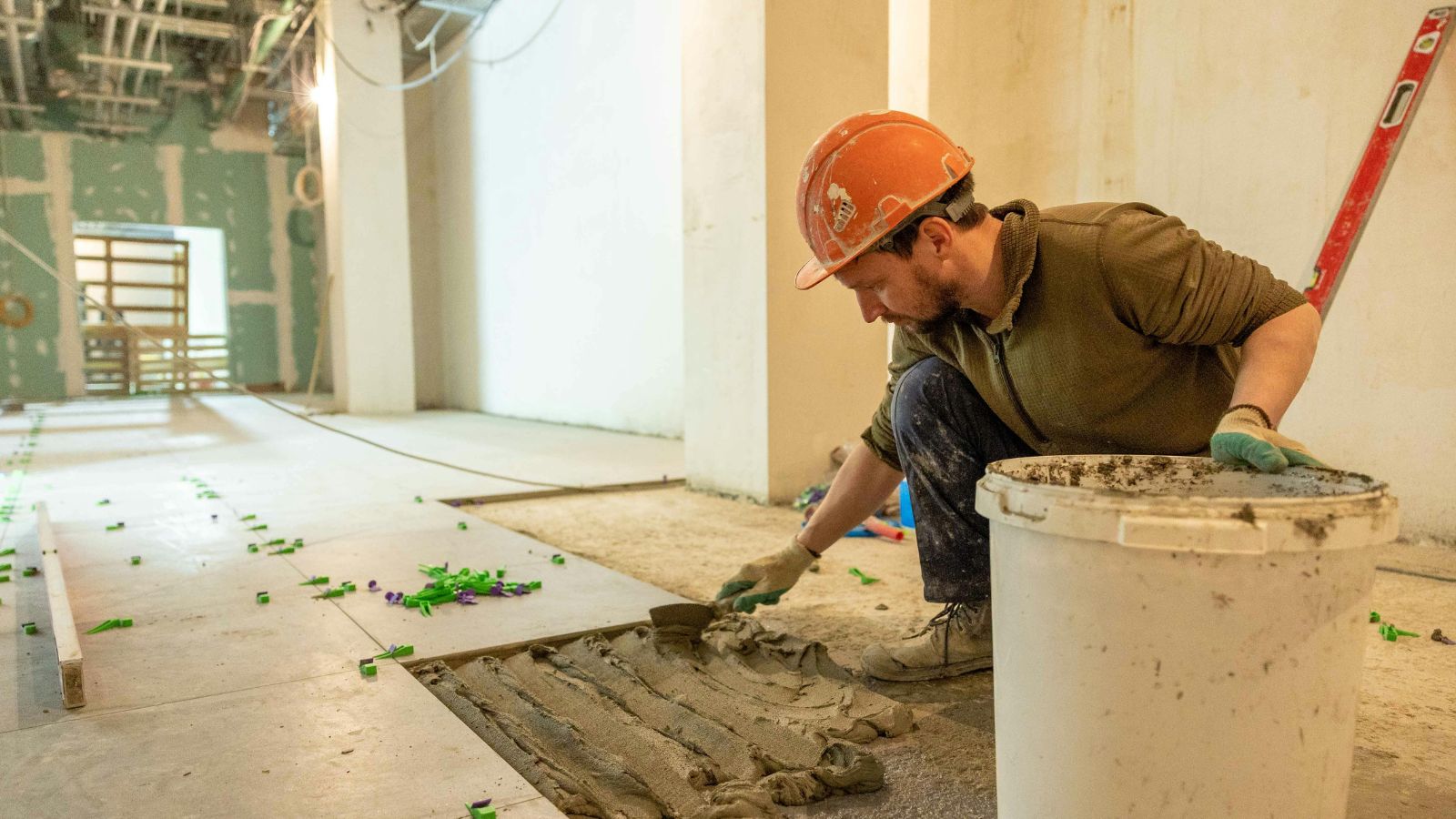
Ideal Applications for Each Flooring Type
Selecting the right flooring type often depends on the room’s purpose, comfort requirements, and expected usage.
Ideal Applications for Hybrid Flooring
Hybrid flooring is the best choice for areas where comfort, warmth, and noise reduction are high priorities. It’s perfect for living rooms, bedrooms, playrooms, and even kitchens—spaces where families gather, relax, or spend significant amounts of time. Hybrid flooring also suits homes with children and elderly residents, thanks to its soft, cushioned feel underfoot and acoustic benefits.
Potential Scenarios:
- Family rooms or bedrooms where comfort and warmth matter most.
- Kitchens or dining spaces needing a comfortable, durable surface.
- Multi-purpose rooms where noise reduction is beneficial.
Ideal Applications for Wood Look Tiles
Wood look tiles excel in wet, high-traffic, or spill-prone areas such as kitchens, bathrooms, laundry rooms, entryways, and hallways. Their exceptional durability and waterproof nature make them a practical solution for spaces requiring frequent cleaning or exposed to moisture and heavy use.
Potential Scenarios:
- Bathrooms or laundries frequently exposed to moisture and humidity.
- Entryways or mudrooms needing high durability and easy maintenance.
- High-traffic corridors or living spaces where wear and tear resistance is essential.
Environmental and Sustainability Considerations
For environmentally-conscious homeowners, sustainability considerations can influence flooring choices significantly.
Hybrid Flooring Sustainability
Hybrid flooring products increasingly prioritise sustainability, with many manufacturers focusing on using recycled materials and environmentally responsible production processes. However, as a synthetic product, hybrid flooring is less easily recyclable at the end of its lifespan. It’s important to look for hybrid flooring options with low VOC (volatile organic compound) emissions, ensuring better indoor air quality for your home.
Wood Look Tiles Sustainability
Ceramic and porcelain tiles offer notable sustainability advantages. They’re produced primarily from natural materials such as clay, making them eco-friendly in terms of raw materials. Tiles typically have exceptionally low VOC emissions, providing superior indoor air quality. Additionally, tiles have an extensive lifespan and can often be recycled or repurposed, reducing long-term environmental impact.
Recommended Based on Sustainability
- Select wood look tiles if prioritising natural, recyclable materials, minimal VOC emissions, and longevity.
- Choose hybrid flooring if seeking sustainable manufacturing practices, low-VOC options, and comfort benefits—while acknowledging potential limitations in recycling at end-of-life.
Conclusion
Choosing between hybrid flooring and wood look tiles for your renovation involves balancing appearance, durability, comfort, cost, maintenance, and sustainability factors.
Both flooring options provide significant benefits:
- Hybrid Flooring: Offers warmth, comfort, noise reduction, and affordability, making it ideal for living areas and bedrooms.
- Wood Look Tiles: Delivers exceptional durability, easy maintenance, water-resistance, and long-term sustainability, perfect for wet or high-traffic spaces.
Ultimately, the best flooring choice depends on your home’s specific requirements, budget, and lifestyle needs. If you’re in Perth, Ross’s Discount Home Centre offers an extensive range of high-quality hybrid flooring and wood look tiles, each backed by a 10-year warranty, ensuring confidence and reliability for your renovation project.
Take time to evaluate your priorities carefully, and you’ll find the perfect flooring solution to enhance your home for years ahead.



